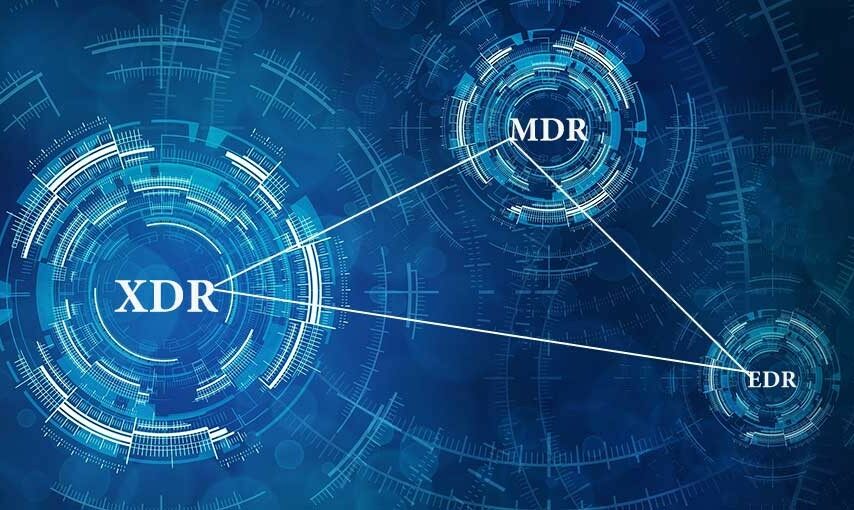In the ever-expanding digital landscape, where technology permeates every aspect of our lives, the importance of robust cybersecurity cannot be overstated. Cyber threats are constantly evolving, becoming more sophisticated and elusive. To effectively defend against these threats, it’s crucial to understand the tools at our disposal. Two such tools are Managed Detection and Response (MDR) and Endpoint Detection and Response (EDR). In this comprehensive guide, we’ll explain and contrast MDR vs EDR, helping you make informed decisions to protect yourself and your information in the digital realm.
The Digital Era: A World of Opportunities and Threats
The digital age has brought unparalleled opportunities for communication, productivity, and innovation. However, it has also ushered in a new era of threats. Cybercriminals leverage advanced techniques and strategies to breach systems, steal data, and disrupt operations. To safeguard your digital presence, you need to deploy robust cybersecurity measures.
Understanding MDR (Managed Detection and Response)
MDR is a proactive cybersecurity service that provides continuous monitoring, threat detection, and rapid response to potential threats. Here’s a breakdown of its key components:
- Continuous Monitoring: MDR continuously monitors your network and endpoints for suspicious activities, anomalies, or signs of compromise. It identifies threats in real time, reducing the dwell time of attackers.
- Threat Detection: MDR employs advanced technologies and threat intelligence to detect known and emerging threats. It can identify patterns and behaviors indicative of malicious activity.
- Rapid Response: In the event of a threat, MDR initiates a swift response. This may involve isolating affected systems, neutralizing malware, and minimizing damage.
Understanding EDR (Endpoint Detection and Response)
EDR, on the other hand, focuses specifically on endpoints, such as computers, servers, and mobile devices. Here are the core aspects of EDR:
- Endpoint Visibility: EDR solutions provide deep visibility into endpoints, allowing for comprehensive monitoring of activities, processes, and events.
- Threat Detection: EDR uses behavioral analysis and machine learning to detect suspicious activities on endpoints. It can identify signs of malware, unauthorized access, and unusual behavior.
- Incident Response: EDR enables organizations to respond swiftly to endpoint-related threats. It provides the tools and insights needed to investigate and mitigate incidents.
Contrasting MDR and EDR
While both MDR and EDR play pivotal roles in cybersecurity, they differ in focus and scope. Here’s a comparison to help you understand their distinctions:
- Scope:
- MDR covers a broader range of assets, including network traffic, servers, and endpoints.
- EDR is more narrowly focused on endpoint devices.
- Monitoring:
- MDR offers holistic monitoring of an organization’s entire digital environment.
- EDR concentrates on monitoring activities and events specific to endpoints.
- Detection:
- MDR leverages network traffic analysis, threat intelligence, and endpoint telemetry to detect threats.
- EDR primarily relies on endpoint telemetry data for threat detection.
- Response:
- MDR provides a comprehensive response strategy, including incident investigation and management.
- EDR is tailored for endpoint-specific response, allowing for rapid containment and recovery.
Why Both MDR and EDR Are Vital
In today’s cyber threat landscape, having both MDR and EDR is often the most effective strategy. Here’s why:
- Comprehensive Protection: MDR offers broad visibility and detection capabilities, ensuring threats are identified at various stages of an attack. EDR, with its endpoint focus, provides detailed insights into endpoint-level activities.
- Early Detection: EDR excels at early threat detection on endpoints, while MDR offers insights into network-level activities. Combined, they can detect threats early, reducing the risk of a successful breach.
- Swift Response: When a threat is detected, the combination of MDR and EDR enables organizations to respond rapidly. They can isolate compromised endpoints, investigate the extent of the breach, and minimize damage.
- Threat Hunting: MDR includes threat-hunting services, where cybersecurity experts actively seek out threats in your environment. EDR enhances this by providing deep visibility into endpoints, aiding in more targeted threat hunting.
Conclusion
In the digital age, where technology is an integral part of our lives, effective cybersecurity is paramount. Managed Detection and Response (MDR) and Endpoint Detection and Response (EDR) are essential tools in the fight against cyber threats. While MDR offers broad coverage and network visibility, EDR specializes in endpoint-specific monitoring and response. To bridge the gap and provide comprehensive protection, organizations often deploy both MDR and EDR solutions. This combined approach offers early threat detection, swift response, and a robust defense against the evolving landscape of cyber threats. By understanding the roles of MDR and EDR, you can make informed decisions to safeguard your digital world.








